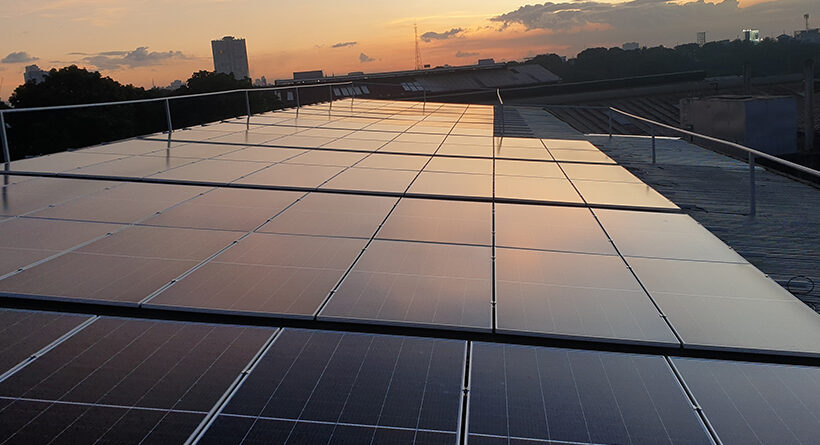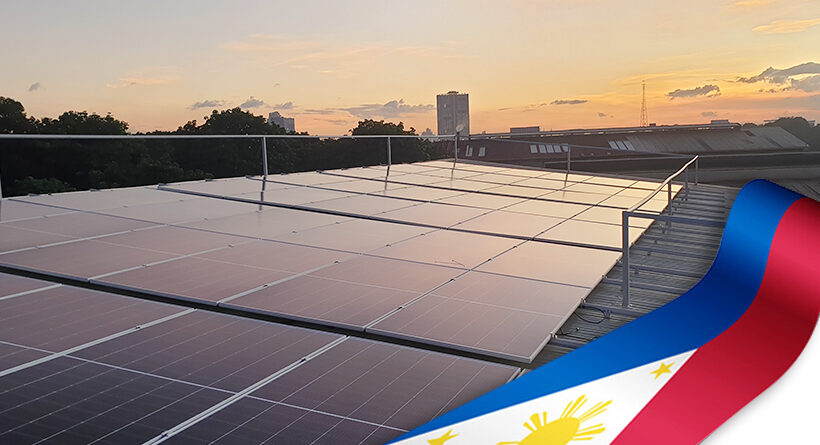The Philippines is one of the most disaster-prone countries in the world that faces frequent typhoons, earthquakes, volcanic eruptions, and floods. These natural disasters can often disrupt the power supply, leaving communities without electricity for days or weeks. To cover up this vulnerability, solar panels have emerged as a critical tool in boosting disaster resilience across the country.
This blog explores how solar panels are enhancing the Philippines’ ability to withstand and recover from disasters, along with how industries can help in reducing such situations.
The Philippines: A Nation at Risk
Located along the Pacific Ring of Fire and within the typhoon, the geographic location of the Philippines makes it highly susceptible to natural disasters and experiences an average of 20 typhoons annually, along with regular earthquakes and volcanic activity.
These results in power cuts, which could keep the lives of Filipinos at potential risk. Hospitals may lose power to critical equipment, communication networks may go down, and access to clean water can become limited. This is where solar panels appear as an effective solution for improving disaster resilience through reliable power sources, which has become a national priority.
Solar Panels: A Reliable Power Source in Times of Crisis
Unlike traditional grids, solar panels generate electricity locally, which reduces the risk of power outages during natural disasters. Here’s how solar panels are boosting disaster resilience in the Philippines
1. Decentralized Power Generation
The ability of solar panels to generate electricity independently makes them stand out from the traditional sources of electricity. Amid a disaster, when the grid might be down, solar panels can continue to provide power to homes, businesses, and critical infrastructure. This decentralized power generation ensures that essential services, like hospitals, emergency shelters, and communication centers, remain operational despite any crisis.
2. Off-grid solutions for Remote Areas
In many rural areas of the Philippines, the national grid isn’t accessible. For regions like these, solar panels provide an off-grid power solution which serves as reliable and sustainable. During a disaster, these off-grid systems are invaluable, as they are not affected by damage to the national grid. Solar-powered systems can provide lighting, power for communication devices, and energy for water purification systems, which are critical for survival in the aftermath of a disaster.
3. Rapid Deployment and Flexibility
Solar panels can be rapidly deployed in response to a disaster while providing immediate power to affected areas. Panels that are portable are particularly useful in emergency situations as they can be easily transported and set up in disaster-stricken areas. This flexibility is advantageous as it allows for a rapid response and ensures power is restored as quickly as possible.
4. Sustainable Power for Relief Operations
Disaster relief operations require a reliable power source to support medical facilities, communication networks, and logistics. Solar panels provide a sustainable and continuous power supply for these operations, which reduces their dependence on diesel generators, which can be expensive to purchase during a disaster. They can also power solar cookers to cook food which ensures food safety and preparation without relying on scarce fuel. Thus, by powering relief operations with solar energy, the Philippines can ensure that aid reaches those in need faster and more efficiently.
5. Enhancing Community Resilience
The solar panels are effective in enhancing the long-term resilience of communities. By providing a stable and reliable source of electricity, solar panels can help communities to resume operations, schools to reopen, and households to regain a sense of normalcy. In this way, solar energy contributes to the overall resilience and sustainability of communities across the Philippines.
Solar Gadgets for Resilience during Emergencies
Gadgets that use solar power, provide assurance, security, and peace of mind when the grid goes down during natural disasters in the Philippines while keeping vital communication, light, and safety measures within reach.
1. Solar Generators: A Lifeline During Disasters
Solar generators have emerged as crucial assets in disaster-stricken areas. Unlike traditional fuel-powered generators, they offer a clean and reliable energy source by harnessing power from the sun. This makes them ideal for use in emergencies where fuel supplies are often scarce or inaccessible.
These portable units can easily generate power for essential devices like medical equipment, communication tools, and lights, ensuring that critical services remain operational even when the conventional grid is down.
2. Solar-Powered Flashlights: Light in the Darkest of Times
In the aftermath of a disaster, access to electricity is often one of the first casualties. Solar-powered flashlights provide an essential solution by offering reliable light when it’s needed the most. The best part about these devices is that they charge using the sunlight, which makes them ideal for families and emergency workers. In the Philippines, where power outages during disasters are common, solar-powered flashlights could be the calm during such chaos.
3. Solar Battery Storage: Ensuring Continuous Power Supply
Solar battery storage systems are significant for maintaining a continuous power supply during emergencies in the Philippines. These devices store excess solar energy that is generated during the day and ensure that electricity remains accessible even when the sun isn’t shining or when the grid is down. The stored energy can power critical devices to stay prepared for emergencies by providing a dependable backup and helping communities recover faster.
4. Solar-Powered Communication Devices: Staying Connected
It is difficult to maintain smooth conversations during any disaster to coordinate relief efforts, share information, and ensure that affected populations stay informed. Solar-powered communication devices such as satellite phones and radios are the bridge between isolated communities and emergency responders. They are valuable in times like these as they can be recharged with solar panels, which ensures that they operate well even during a crisis.
5. Solar-Powered Street Lights
To enhance safety and security in disaster-hit areas, solar-powered street lights play an important role by providing reliable lighting, which is essential for nighttime visibility, reducing the risk of accidents, and deterring crime. In the Philippines, these lights are quite valuable in evacuation centres and temporary shelters since they ensure that these spaces remain well-lit and secure.
NGOs Playing a Pivotal Role in Disaster Resilience
Several NGOs in the Philippines are leveraging solar technology to enhance disaster resilience. These NGOs support and utilize solar technology during and after disasters while helping save lives.
Founded in the year 1947, the Philippine Red Cross is a leading humanitarian organization in the Philippines which provides life-saving services while protecting the dignity of vulnerable communities. The organization offers a wide range of services which includes disaster management, health and welfare support, blood donation programs, and emergency medical training.
Save the Children Philippines is dedicated to improving the lives of Filipino children and ensure that they have a healthy start, access to education, and protection from harm. They provide immediate care during emergencies, enhance community resilience and advocate for children’s rights.
World Vision Philippines is a Christian humanitarian organization who are dedicated to helping Filipino children and communities overcome poverty and injustice. They mainly focus on child protection,education, health, nutrition, disaster preparedness, and economic development. They operate in 29 areas across the country and have impacted over 56,000 children through sponsorship and numerous projects.
Gawad Kalinga (GK) is a Philippine-based organization which focuses on ending poverty through community empowerment and development. It works to build sustainable communities by providing you with access to housing,education, health, and livelihood opportunities. They preach a culture of caring and sharing to restore the dignity of the poor and empower them to rise out of poverty.
CARE Philippines is a part of the global CARE network , a humanitarian organization dedicated to eradicating poverty and providing relief in emergencies. Their focus on addressing issues like gender equality, health, and disaster resilience. The organization works to strengthen local capacity, improve access to essential services, and promote sustainable development across all societies.
Conclusion
Solar panels are more than just a source of clean energy; they play a vital role in building disaster resilience in the Philippines. While providing a reliable power source during the crisis, solar energy helps protect lives, supports relief operations, and enhances community resilience.
At Nativ Techniks we are leading the charge to support the Philippines on its way to harness the full potential of solar energy and create a brighter and more resilient future. Thus, don’t place your future at risk; contact us now to experience change in your life.
To contact us, call +639176310032 or drop a mail at wecare@nativtechniks.co
Also Read Our Other Blogs
How Businesses in the Philippines Can Gain Competitive Edge with Solar Power ?













Leave a Reply